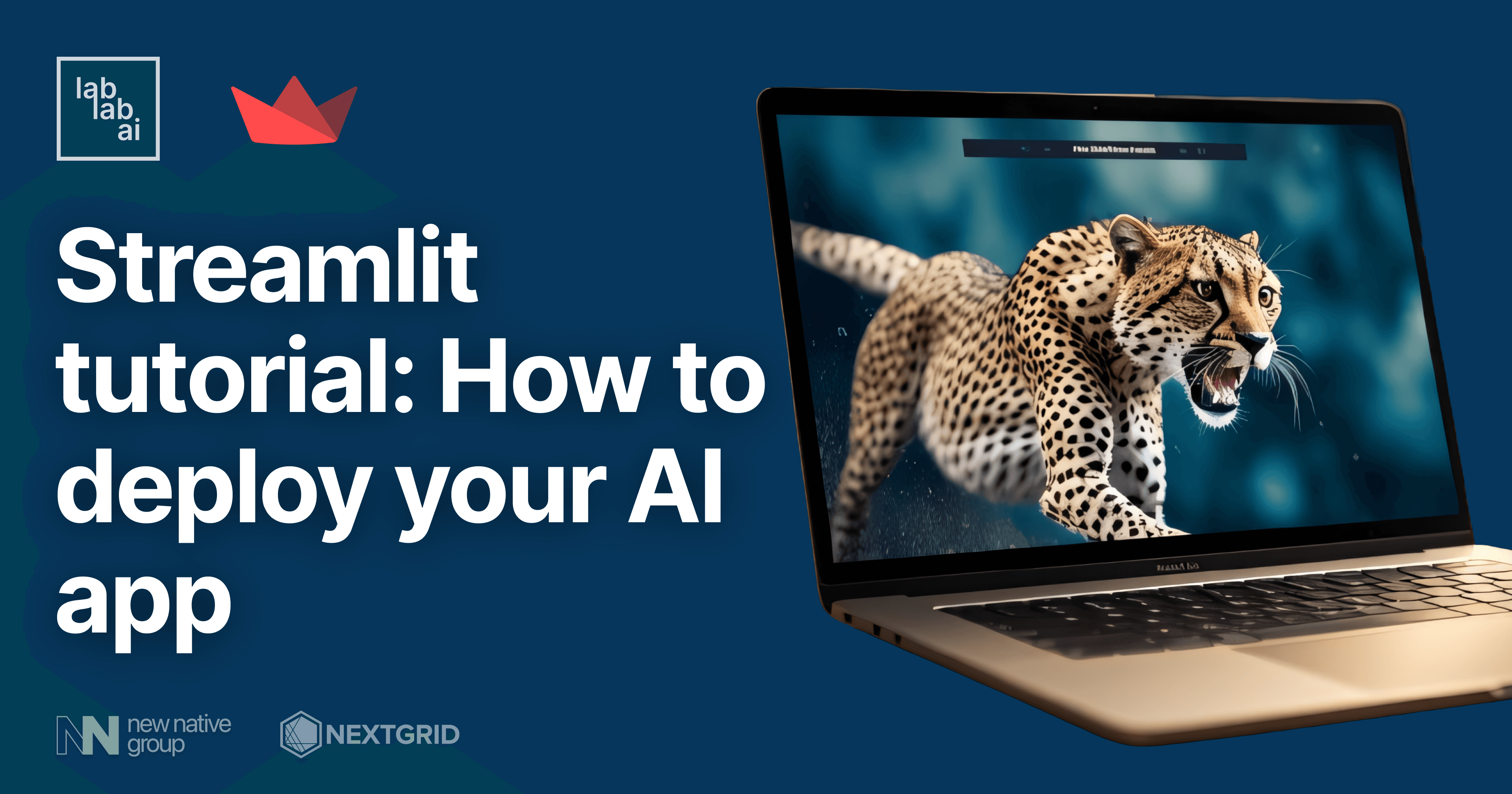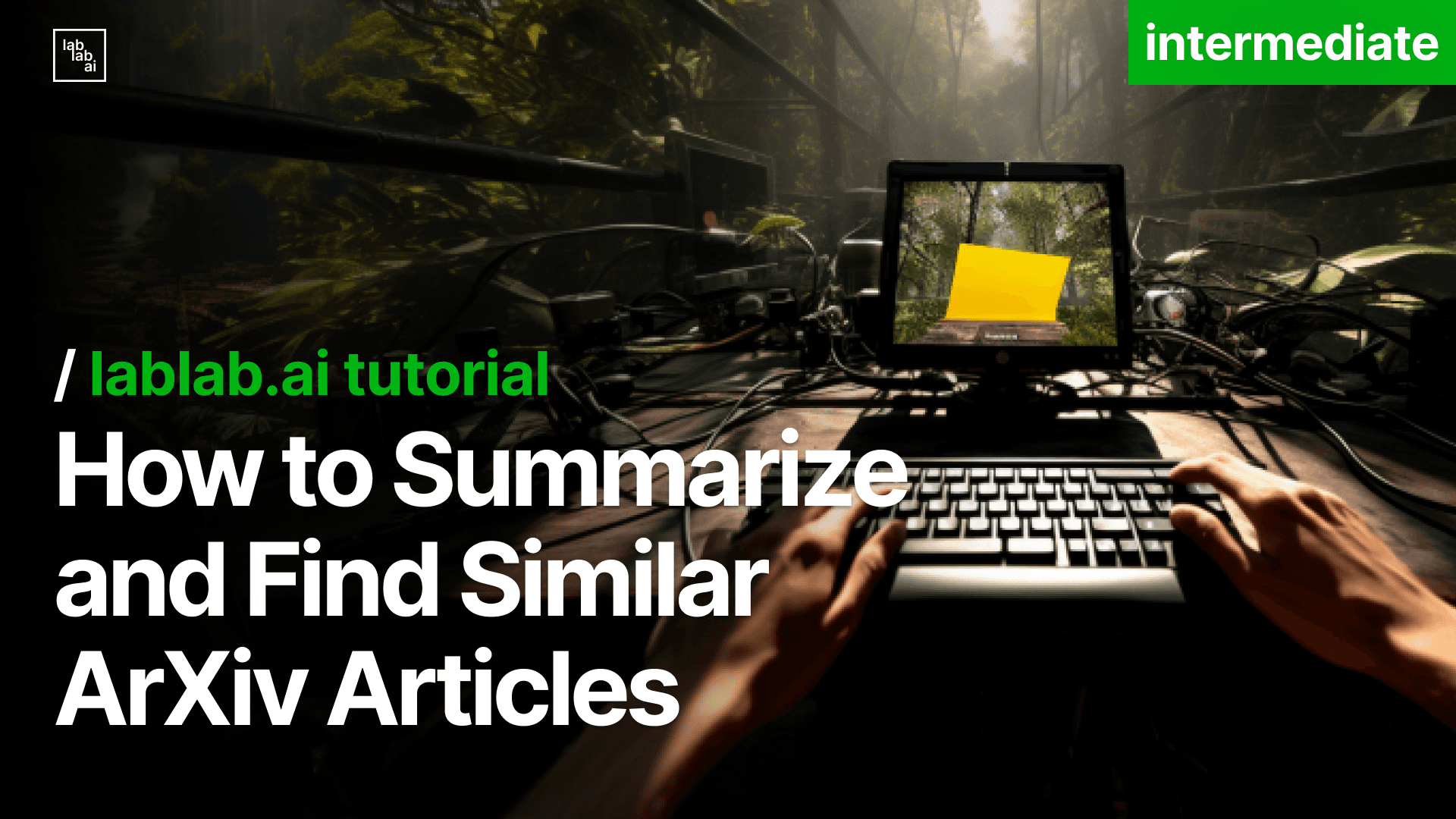Unlocking New Dimensions: A Deep Dive into OpenAI's Vision Fine-Tuning with GPT-4o
Unlocking New Dimensions: A Deep Dive into OpenAI's Vision Fine-Tuning with GPT-4o
The recent release of GPT-4o's vision fine-tuning capabilities marks a significant architectural advancement in multimodal AI systems. While the industry has long grappled with the challenges of true visual-linguistic understanding, this release represents more than just an incremental improvement - it's a fundamental shift in how we can approach visual AI training.
The Paradigm Shift: Beyond Textual Understanding
The limitations of text-only transformers have been a persistent bottleneck in AI development. Even with sophisticated prompt engineering and chain-of-thought reasoning, these models struggled with tasks that humans handle intuitively - understanding spatial relationships, identifying visual patterns, and making contextual inferences from visual data.
What's particularly interesting about GPT-4o's vision fine-tuning isn't just the multimodal capability itself - it's the architectural approach that allows for efficient transfer learning while maintaining the model's broad knowledge base. This isn't simply about pattern matching or feature extraction; it's about enabling genuine visual reasoning that integrates with the model's existing knowledge graph.
Unveiling GPT-4o's Vision Fine-Tuning
The technical implementation deserves attention here. Unlike traditional computer vision approaches that often require massive datasets and specialized architectures, GPT-4o's vision fine-tuning leverages the model's pre-existing understanding of concepts and relationships. This allows for remarkably efficient training cycles - we're seeing meaningful results with datasets as small as 100 images, a scale that would have been insufficient for traditional CV models.
This efficiency isn't just about reducing computational overhead. It fundamentally changes the development cycle for vision-enabled AI applications. Teams can iterate rapidly, experiment with different training approaches, and fine-tune models for specific domains without the traditional barriers of data collection and preprocessing.
Diving Deep: Key Features of Vision Fine-Tuning
The architecture behind GPT-4o's vision capabilities introduces several technical innovations that warrant closer examination. Understanding these features is crucial for developers looking to leverage the full potential of the system.
Integrating Image and Text Data
The model's approach to multimodal fusion is particularly elegant. Rather than treating visual and textual inputs as separate streams that merge at some final layer, GPT-4o implements a more sophisticated cross-attention mechanism. This allows for bidirectional information flow between modalities from early processing stages, enabling more nuanced understanding of visual-linguistic relationships.
# Example of handling multimodal input in the OpenAI API
def process_multimodal_input(image_path, prompt):
image = client.files.create(
file=open(image_path, "rb"),
purpose="fine-tune"
)
response = client.chat.completions.create(
model="gpt-4-vision",
messages=[
{
"role": "user",
"content": [
{"type": "text", "text": prompt},
{"type": "image_url", "image_url": image.url}
]
}
]
)
Efficiency with Minimal Data
One of the most compelling technical achievements is the model's ability to learn from limited datasets. This efficiency stems from several key architectural decisions:
- Transfer learning from the base model's comprehensive knowledge representation
- Sophisticated data augmentation techniques that maximize the utility of each training example
- Adaptive learning rate scheduling that prevents overfitting on small datasets
Multi-Image Contextualization
The system's ability to process multiple images simultaneously isn't just a feature - it's a fundamental capability that enables complex reasoning across visual contexts. This opens up interesting possibilities for applications requiring comparative analysis or temporal understanding:
# Handling multiple images in a single context
def process_multiple_images(image_paths, analysis_prompt):
image_contents = [
{
"type": "image_url",
"image_url": client.files.create(
file=open(path, "rb"),
purpose="fine-tune"
).url
}
for path in image_paths
]
# Combine with text prompt
message_content = [{"type": "text", "text": analysis_prompt}] + image_contents
Cost Optimization Strategies
While the model's capabilities are impressive, practical implementation requires careful consideration of computational resources. Here's where the technical trade-offs become interesting:
- Image Resolution Management: Finding the optimal balance between detail preservation and token efficiency
- Batch Processing Optimization: Implementing intelligent batching strategies to maximize throughput
- Caching Mechanisms: Strategic caching of embeddings for frequently accessed images
The key is understanding these parameters aren't just about cost reduction - they directly impact model performance and should be tuned based on your specific use case requirements.
Crafting the Perfect Dataset
The quality and structure of your training data fundamentally shapes your model's capabilities. Let's examine the critical aspects of dataset preparation that directly impact fine-tuning success.
Quality Over Quantity
While GPT-4o's vision capabilities can achieve impressive results with relatively small datasets, the composition of your training data deserves careful consideration:
# Example dataset structure for fine-tuning
dataset = [
{
"messages": [
{"role": "user", "content": [
{"type": "image", "image_url": "path/to/image1.jpg"},
{"type": "text", "text": "Analyze this circuit diagram"}
]},
{"role": "assistant", "content": "The circuit shows a dual-stage amplifier..."}
]
},
# Additional training examples...
]
Key considerations for dataset composition:
- Diverse representation of edge cases and failure modes
- Consistent image quality and resolution standards
- Balanced distribution of visual features and contexts
- Clear and unambiguous labeling/annotation schemas
Technical Specifications Simplified
Understanding the technical constraints helps optimize your dataset for training efficiency:
def validate_image_specs(image_path):
with Image.open(image_path) as img:
# Check format and size constraints
if img.format not in ['JPEG', 'PNG', 'WEBP']:
raise ValueError("Unsupported format")
# OpenAI's recommended size limits
max_dimension = 2048
if max(img.size) > max_dimension:
img = resize_image(img, max_dimension)
# Validate color mode
if img.mode not in ['RGB', 'RGBA']:
img = img.convert('RGB')
return img
Data Pipeline Architecture
Implementing a robust data pipeline is crucial for maintaining dataset quality and training efficiency:
class VisionDataPipeline:
def __init__(self, base_path):
self.base_path = base_path
self.preprocessing_steps = []
def add_preprocessing_step(self, step):
"""Add preprocessing steps like resizing, normalization, etc."""
self.preprocessing_steps.append(step)
def process_dataset(self, image_paths):
processed_data = []
for path in image_paths:
try:
image = self.load_and_validate(path)
for step in self.preprocessing_steps:
image = step(image)
processed_data.append(self.format_for_training(image))
except Exception as e:
logger.error(f"Failed to process {path}: {str(e)}")
return processed_data
Navigating Content Restrictions
OpenAI's content policies require careful consideration during dataset curation. Beyond obvious restrictions, consider:
- Intellectual property implications of training data
- Privacy considerations for any human-identifiable information
- Regulatory compliance for domain-specific applications
- Data provenance and attribution requirements
The key is implementing systematic validation checks:
def validate_content_compliance(dataset):
compliance_checks = {
'ip_clearance': check_ip_rights,
'privacy_compliance': check_pii,
'content_policy': check_content_restrictions,
'data_attribution': verify_attribution
}
validation_results = {}
for check_name, check_func in compliance_checks.items():
validation_results[check_name] = check_func(dataset)
return all(validation_results.values()), validation_results
This systematic approach to dataset preparation sets the foundation for successful fine-tuning. The next section will cover the actual fine-tuning process and optimization strategies.
The vision fine-tuning process with GPT-4o marks a significant departure from traditional computer vision approaches, introducing a more streamlined path from data preparation to deployment. This journey, while technically sophisticated, has been designed to minimize the traditional barriers to entry in computer vision development.
Understanding the Economics
The financial landscape of GPT-4o vision fine-tuning reflects OpenAI's approach to balancing accessibility with computational costs. During the training phase, the model typically incurs costs of $25.00 per 1M training tokens (or $0.025 per thousand tokens), reflecting the significant computational resources required for teaching the model to understand new visual contexts.
As the model transitions to production inference, the costs are reduced to $3.75 per 1M input tokens (or $0.00375 per thousand tokens) and $15.00 per 1M output tokens (or $0.015 per thousand tokens). This makes sustained deployment more economically viable for real-world applications.
These costs reflect the sophisticated nature of the underlying technology. During the training phase, the model doesn’t simply memorize visual patterns — it integrates new visual understanding with its existing knowledge graph, a process that requires significant computational power. However, once fine-tuned, the efficiency of the model during inference operations results in lower operational costs, making long-term deployment more sustainable.
Technical Requirements and Resource Management
GPT-4o's vision fine-tuning system operates within specific technical parameters that have been carefully calibrated for optimal performance. The system accepts standard image formats including JPEG, PNG, and WEBP, with a maximum resolution threshold of 2048x2048 pixels. This limitation isn't arbitrary – it represents a careful balance between maintaining visual fidelity and managing computational resources efficiently. Images must be provided in either RGB or RGBA color modes, ensuring consistent color processing across different types of visual input.
Storage requirements remain relatively modest compared to traditional computer vision systems, with individual images capped at 20MB. This limit helps maintain efficient processing pipelines while ensuring sufficient detail retention for most use cases. The system's ability to work with these constrained parameters while delivering sophisticated visual understanding demonstrates the efficiency of its underlying architecture.
The Training Evolution
Perhaps the most remarkable aspect of GPT-4o's vision fine-tuning is its ability to achieve meaningful results with notably small datasets. Where traditional computer vision systems might require thousands or tens of thousands of images, GPT-4o can demonstrate significant learning with datasets as small as 100 images. This efficiency stems from the model's ability to leverage its pre-existing understanding of visual concepts, effectively transferring this knowledge to new domains.
The training process itself progresses through several distinct stages, beginning with initial data validation and proceeding through progressive refinement of the model's visual understanding. Throughout this process, the system maintains its broader language understanding capabilities while developing increasingly sophisticated visual interpretation abilities specific to the training domain. This integration of new visual knowledge with existing linguistic and conceptual understanding represents a fundamental advancement in multimodal AI training.
Monitoring Progress and Ensuring Success
The journey of fine-tuning a vision model doesn't end with deployment. Understanding and optimizing model performance requires sophisticated monitoring systems and a deep understanding of key performance indicators. This phase represents the critical bridge between technical implementation and practical value.
Performance Tracking and Metrics
Vision models in production environments generate rich performance data that requires careful interpretation. The monitoring infrastructure tracks response latency, which typically ranges from 200-500ms for standard image processing tasks. However, these metrics must be contextualized within the specific use case – what's acceptable for an offline analysis system might be inadequate for real-time applications.
Response time distributions often follow a bimodal pattern, with simpler image analyses clustering around 250ms and more complex interpretations requiring up to 800ms. This variation provides valuable insights into model behavior under different conditions and helps identify optimization opportunities. Teams monitoring these metrics should focus not just on averages but on the full distribution of response times, as outliers often reveal important patterns in model behavior.
The training process generates several key metrics that deserve careful attention. Loss curves during vision fine-tuning typically show rapid initial improvement followed by a more gradual optimization phase. This pattern differs from traditional language model fine-tuning, reflecting the unique challenges of visual understanding. A healthy training progression should show consistent improvement in both training and validation metrics, though not necessarily at the same rate.
Token utilization metrics provide another crucial window into model performance. Vision models typically consume between 500 and 1500 tokens per image, depending on complexity and resolution. Understanding this consumption pattern helps optimize both training efficiency and operational costs. Teams should monitor the relationship between token usage and model performance to find the sweet spot for their specific use case.
Validation and Model Preservation
Validation in vision fine-tuning requires a more nuanced approach than traditional machine learning metrics might suggest. Beyond simple accuracy measurements, teams need to evaluate the model's understanding across different visual contexts and conditions. This includes testing performance across varying lighting conditions, perspectives, and image qualities – factors that can significantly impact real-world application.
The validation process should include both quantitative metrics and qualitative assessment. While numerical metrics provide a baseline for performance tracking, human evaluation remains crucial for understanding the nuances of visual interpretation. This dual approach helps identify cases where the model might be technically accurate but missing important contextual elements that human observers would naturally understand.
Effective checkpointing strategies play a crucial role in maintaining model quality over time. Rather than saving model states at fixed intervals, modern approaches use adaptive checkpointing based on performance metrics. This ensures that valuable model states are preserved while avoiding unnecessary storage overhead. Teams typically maintain 3-5 recent checkpoints, allowing for rapid rollback if performance degradation is detected.
The decision of when to create checkpoints should be driven by both quantitative metrics and qualitative assessments. Significant improvements in validation performance, unusual patterns in training metrics, or the completion of important training phases all represent valuable checkpointing opportunities. This strategic approach to state preservation helps teams maintain optimal model performance while managing computational resources efficiently.
Real-World Applications: Early Partners and Breakthrough Results
OpenAI's strategic collaboration with select partners has provided compelling evidence of GPT-4o's vision fine-tuning capabilities in real-world scenarios. These early implementations demonstrate not just the technology's versatility, but its ability to deliver significant improvements with remarkably small datasets.
Partner Success Stories
Grab, a leading Southeast Asian technology company, achieved remarkable results in their mapping operations. Using just 100 training examples, they enhanced their GrabMaps service by improving lane count accuracy by 20% and speed limit sign localization by 13%. This significant improvement transformed what was previously a manual process into an efficient automated system, demonstrating how vision fine-tuning can enhance existing infrastructure with minimal data requirements.
In the enterprise automation space, Automat's implementation showcases the technology's potential for business process optimization. Their desktop and web agents saw a dramatic 272% performance improvement in UI element detection, jumping from 16.60% to 61.67% success rate. Perhaps more impressively, they achieved a 7% improvement in information extraction from unstructured insurance documents using only 200 training images.
Coframe's application in digital content creation represents another innovative use case. By fine-tuning GPT-4o with vision capabilities, they improved their AI's ability to generate visually consistent and correctly laid out websites by 26%. This advancement demonstrates the technology's sophisticated understanding of design principles and brand consistency.
Beyond Initial Applications
Building on these early successes, we're seeing emerging applications across various industries. Manufacturing companies are exploring quality control systems that require minimal training data yet provide human-like understanding of defects. Research institutions are investigating applications in scientific image analysis, where the model's ability to understand complex visual patterns could accelerate discovery processes.
The key insight from these implementations isn't just the performance improvements – it's the consistent ability to achieve significant results with small, focused datasets. This efficiency opens doors for specialized applications where large training datasets were previously impossible to obtain or too costly to develop.
Conclusion: Redefining Visual AI Through Fine-Tuning
The introduction of GPT-4o's vision fine-tuning capabilities marks a pivotal moment in the evolution of artificial intelligence. Throughout our exploration – from understanding the core technology to examining real-world implementations – we've seen how this advancement is reshaping what's possible in visual AI processing.
The technology's most remarkable aspect isn't just its technical sophistication, but its accessibility and efficiency. Traditional computer vision systems often required massive datasets and specialized expertise, but GPT-4o's vision fine-tuning achieves impressive results with datasets as small as 100 images. This efficiency, demonstrated by Grab's 20% improvement in mapping accuracy and Automat's 272% enhancement in UI detection, represents a democratization of advanced visual AI capabilities.
The economic implications are equally significant. With training costs ranging from $0.03-0.06 per thousand tokens transitioning to $0.01 for inference, organizations can now implement sophisticated visual AI solutions without prohibitive infrastructure investments. This cost structure, combined with the minimal dataset requirements, opens doors for specialized applications across industries.
What sets this technology apart is its ability to understand context beyond mere pattern recognition. The system doesn't just see images; it comprehends them within broader knowledge frameworks. This is evident in Coframe's 26% improvement in design consistency, where the model demonstrated understanding of both visual aesthetics and practical implementation.
Looking ahead, we're likely witnessing just the beginning of what's possible with vision fine-tuning. As organizations continue to explore innovative applications – from medical imaging to industrial automation – the technology's ability to learn efficiently and adapt to specialized domains suggests a future where visual AI becomes increasingly integrated into our daily operations and decision-making processes.
The journey from OpenAI's initial release to these early successful implementations has demonstrated that we're not just improving how machines process images – we're fundamentally changing how artificial intelligence understands and interacts with the visual world. As this technology continues to evolve, it promises to unlock new possibilities across industries, making sophisticated visual AI accessible to organizations of all sizes.
This isn't just another step forward in AI development; it's a leap toward more intuitive, efficient, and accessible visual intelligence systems. The future of visual AI is not just about seeing – it's about understanding, and that future is already taking shape through GPT-4o's vision fine-tuning capabilities.




